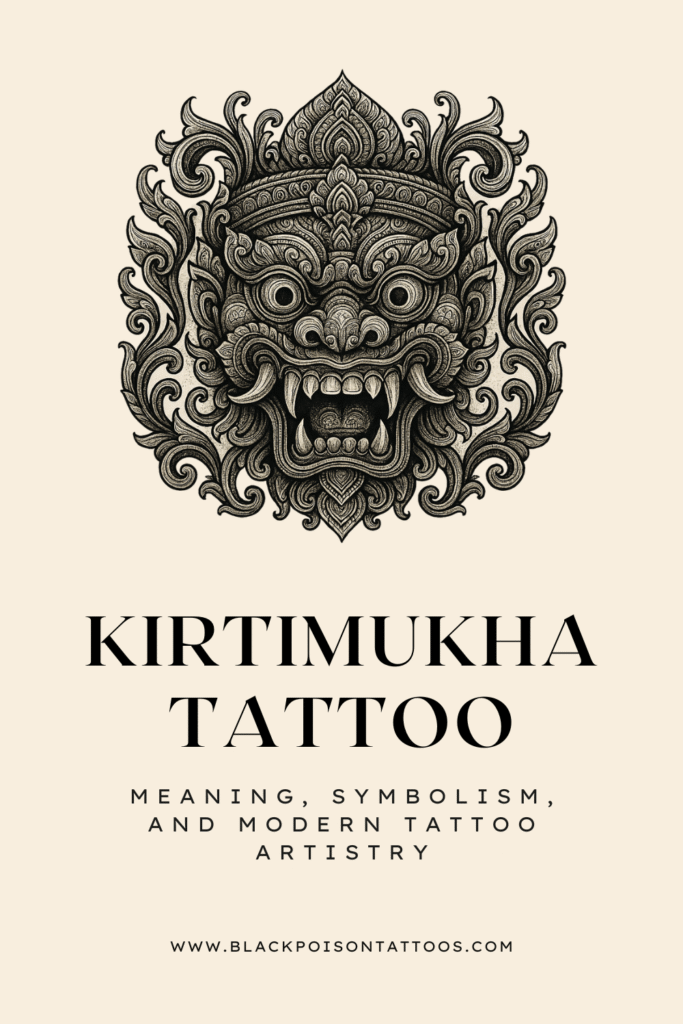The Kirtimukha tattoo is a striking blend of ancient mythology and contemporary body art. This powerful symbol, known as the “Face of Glory,” has roots in Hindu and Buddhist traditions and continues to inspire tattoo enthusiasts around the globe.
In this article, we explore the Kirtimukha’s origins, its deep symbolism, and how it has evolved in today’s tattoo culture.
What Is the Kirtimukha?
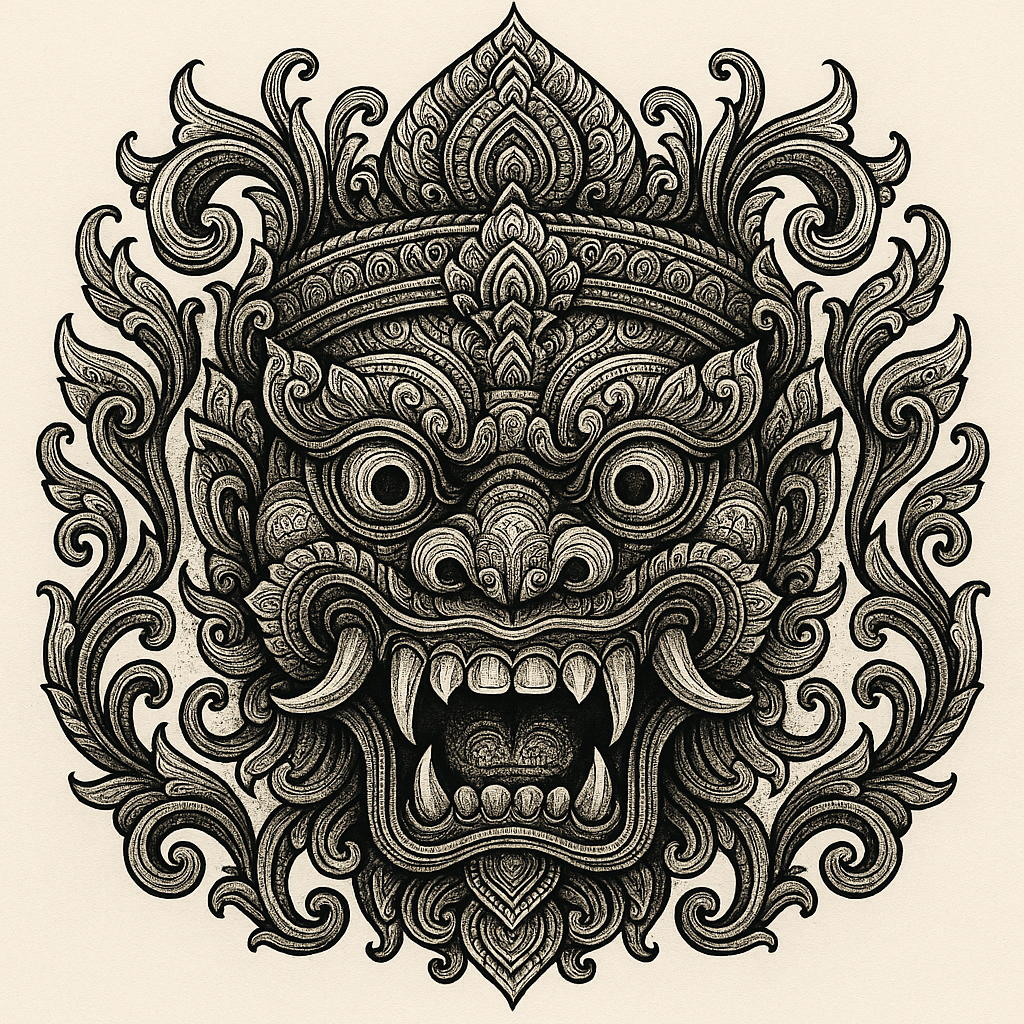
The Kirtimukha is a fierce, monster-like face commonly seen in Hindu and Buddhist temple architecture.
It is characterized by bulging eyes, a wide-open mouth with sharp teeth, and often appears to be swallowing its own body or tail.
This motif is usually placed above doorways, arches, or temple spires as a guardian against evil and negative energies.
The Myth Behind the Kirtimukha
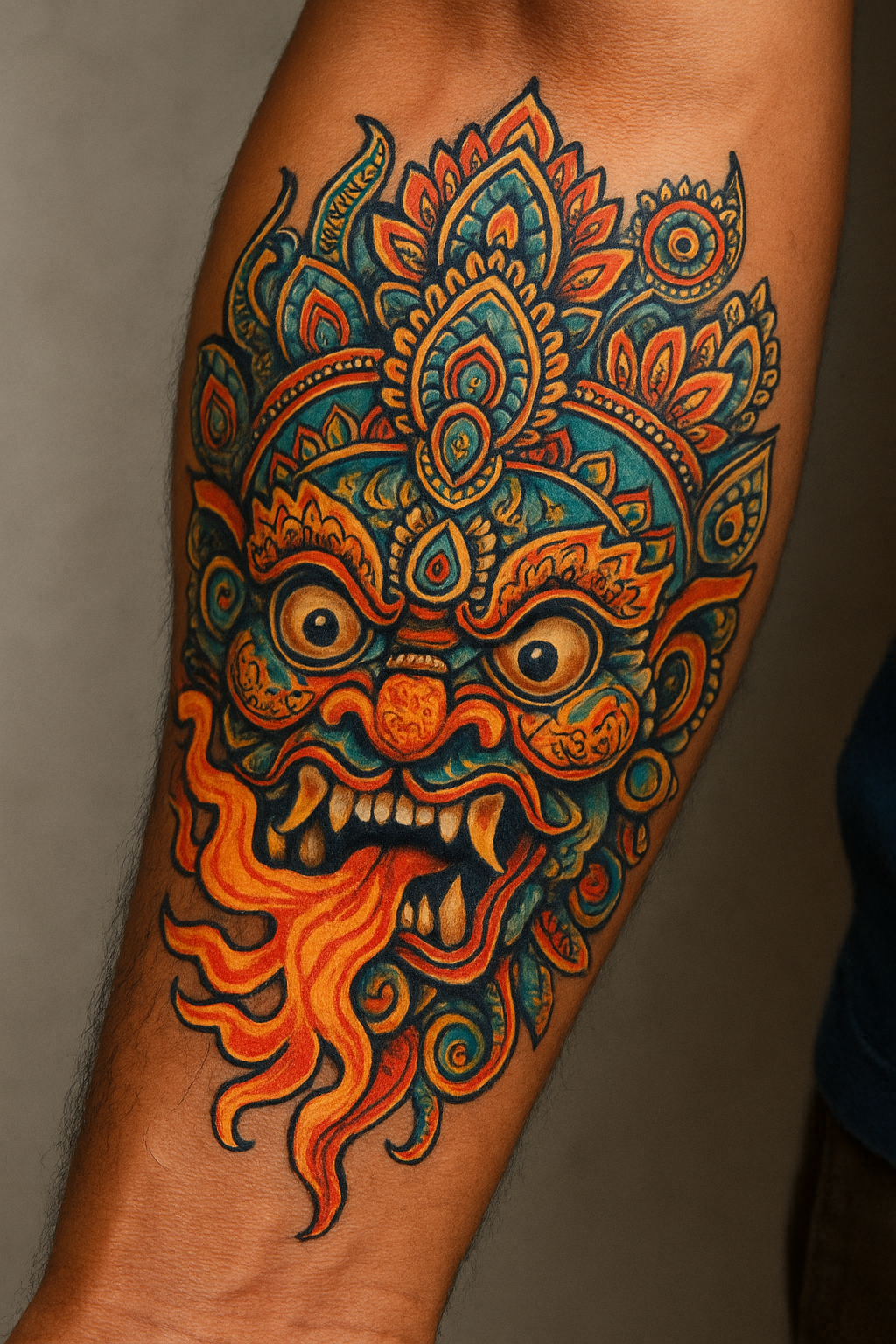
According to Hindu mythology, the Kirtimukha was created by Lord Shiva to confront a demon who threatened his power.
Shiva’s wrath manifested as a terrifying creature that ultimately became a symbol of protection and transformation.
The Kirtimukha’s self-devouring form represents the cyclical nature of life, death, and rebirth – echoing themes found in other ancient symbols like the Ouroboros.
Architectural and Cultural Significance
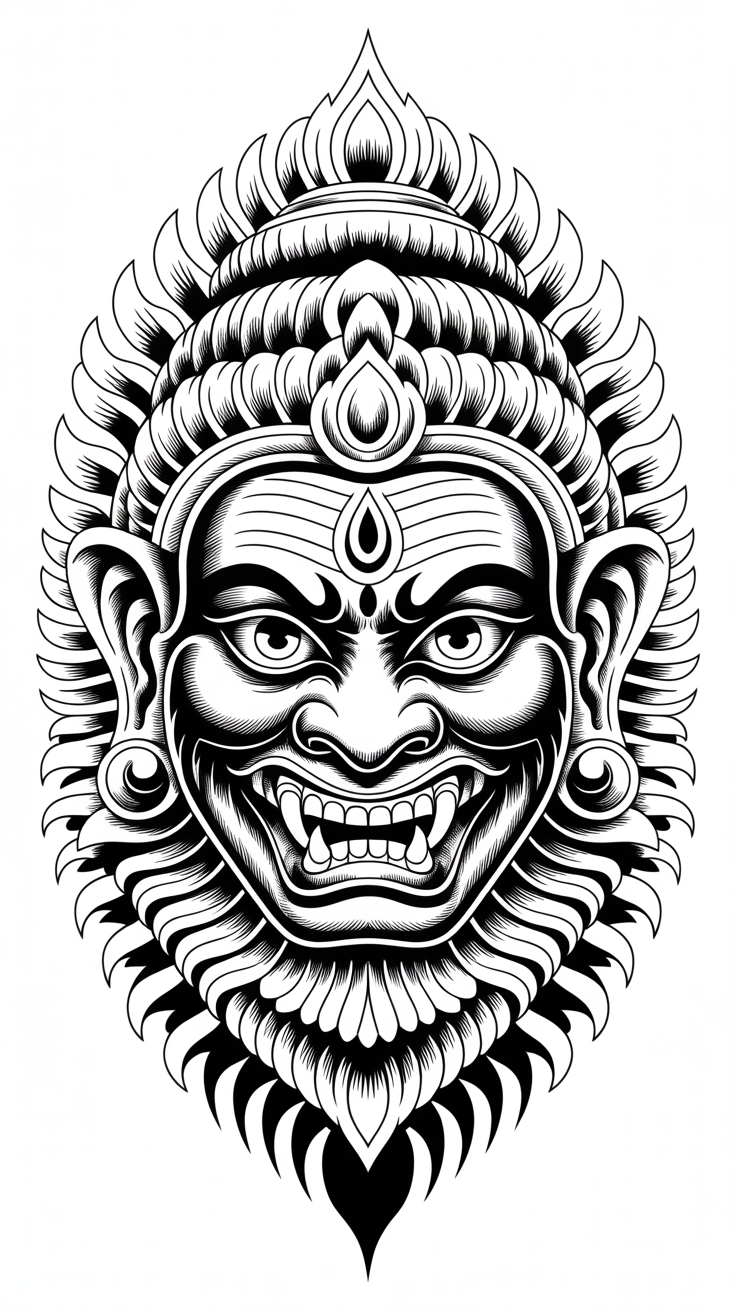
In temples across South and Southeast Asia, the Kirtimukha serves as a threshold guardian.
Its presence at entrances symbolizes the transition from the ordinary world to the sacred, repelling negative forces before they can enter holy spaces.
The motif is also found in Buddhist and Jain temples, highlighting its widespread spiritual importance.
Symbolism of the Kirtimukha Tattoo

Protection and Warding Off Evil
Kirtimukha tattoos are chosen by many for their protective qualities.
The fierce face is believed to shield the wearer from harm, negativity, and misfortune.
In tattoo art, it is often placed on the chest, back, or arms – areas associated with strength and guardianship.
Transformation and Renewal
The Kirtimukha’s self-consuming form symbolizes the destruction of the ego and the continuous cycle of transformation.
This makes the tattoo appealing to those seeking personal growth, spiritual awakening, or a reminder of life’s impermanence.
Devotion and Identity
For followers of Shiva and those interested in Hindu mythology, the Kirtimukha tattoo is a declaration of faith and cultural identity.
The design can be personalized with additional elements such as lotus flowers, mandalas, or traditional patterns, making each tattoo unique.
Modern Kirtimukha Tattoo Designs
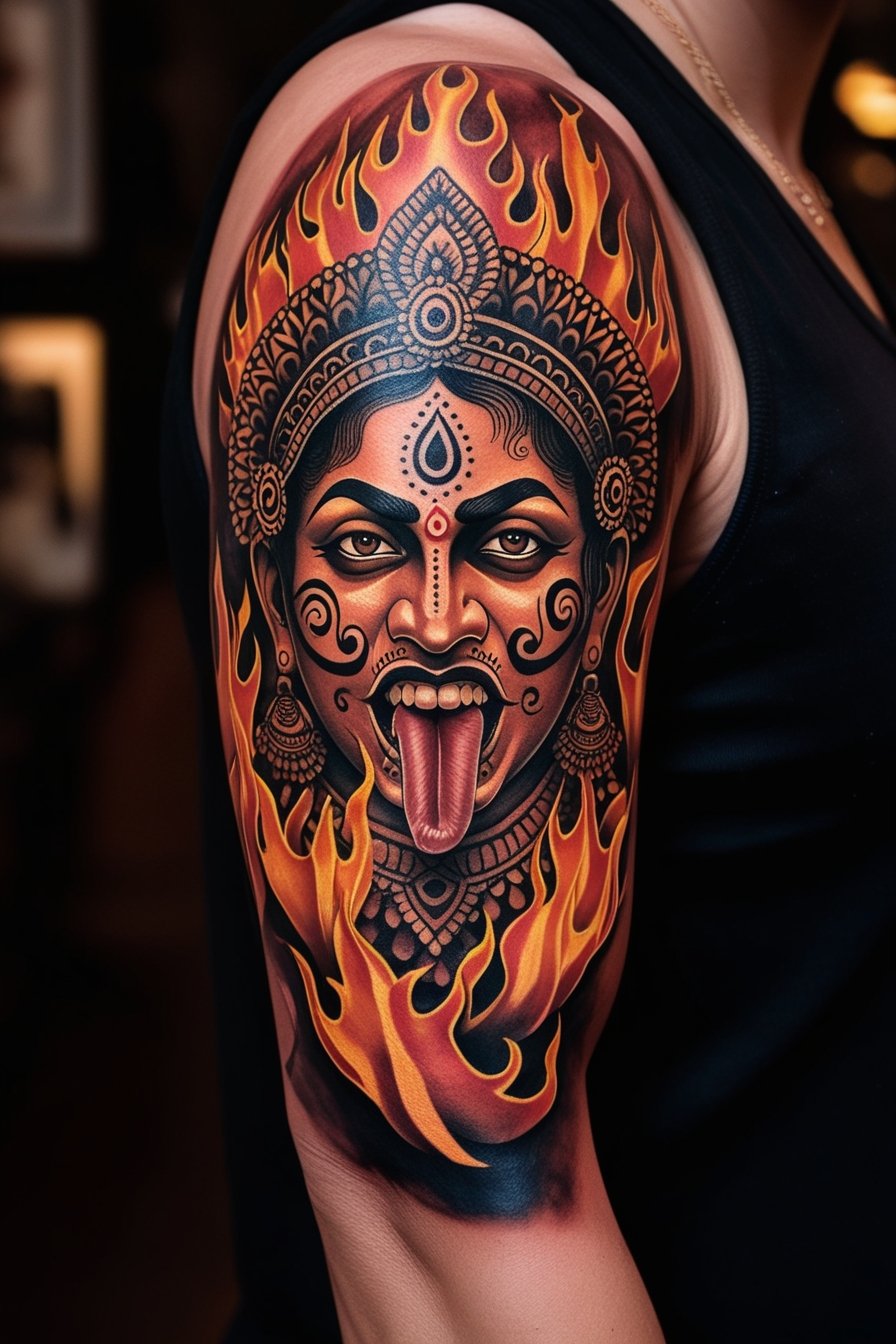
Traditional vs. Contemporary Styles
- Traditional: These tattoos closely follow ancient temple carvings, featuring detailed facial elements, symmetry, and ornate patterns.
- Neo-Traditional: Modern artists blend the Kirtimukha with other styles, such as Japanese or geometric tattoos, for a fresh look.
- Realism: Some tattooists create hyper-realistic versions that mimic the appearance of stone carvings on the skin.
Popular Placement and Personalization
Kirtimukha tattoos are highly adaptable.
They can be scaled to fit different body areas and customized with additional symbols or colors.
Common placements include the chest, back, upper arm, and forearm.
Table: Kirtimukha Tattoo Design Variations
| Style | Key Features | Popular Placements |
|---|---|---|
| Traditional | Symmetrical, ornate, detailed | Chest, back |
| Neo-Traditional | Blended with other cultures/styles | Arm, forearm |
| Realism | 3D shading, stone-like texture | Back, upper arm |
Psychological and Cultural Perspectives
Tattoo as a Talisman
Many wearers see the Kirtimukha tattoo as a form of spiritual armor.
It is chosen not just for its visual appeal but also for its ability to provide comfort and strength in times of uncertainty.
Cultural Appreciation and Respect
As the Kirtimukha tattoo gains popularity outside its traditional context, questions arise about cultural appropriation.
Responsible tattoo artists and wearers educate themselves on the symbol’s origins and meaning to ensure respect and appreciation.
Conclusion
The Kirtimukha tattoo is more than just a striking design – it is a powerful symbol of protection, transformation, and cultural identity.
Whether inspired by ancient mythology or modern artistry, this tattoo continues to captivate and inspire people around the world.

